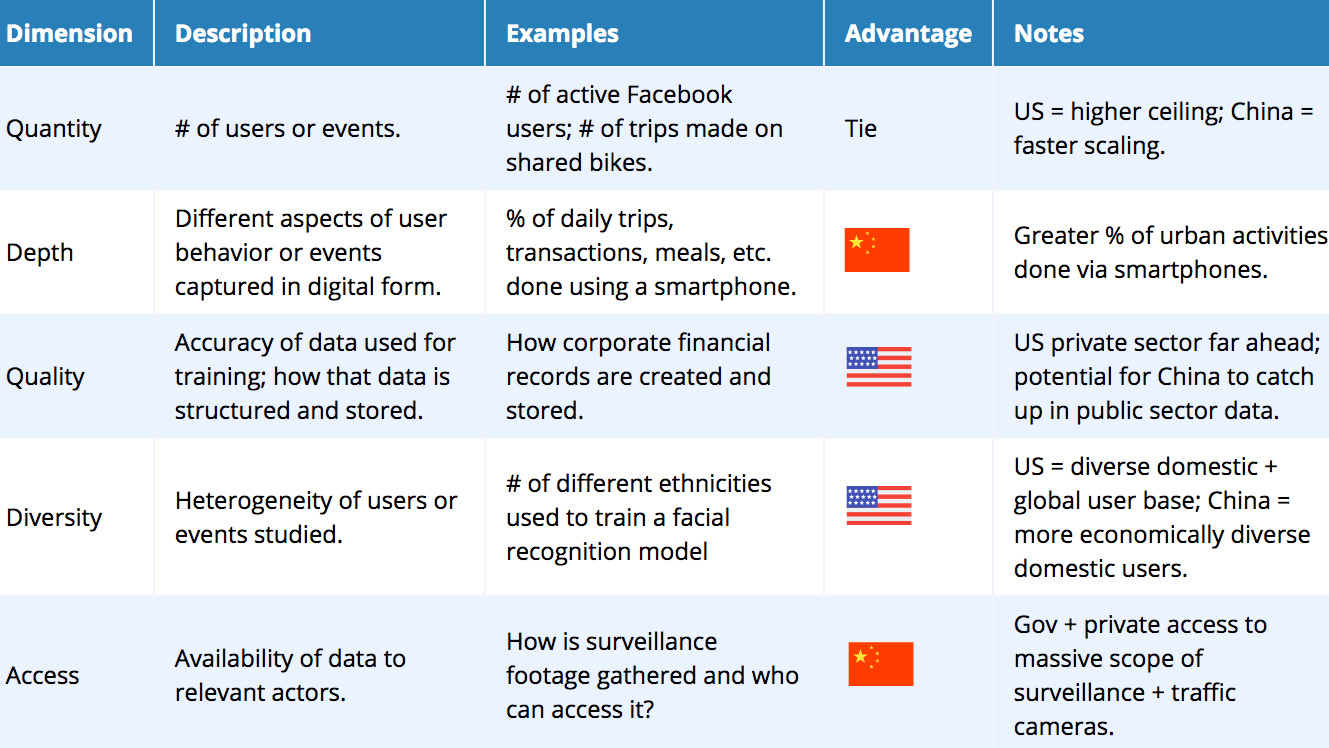How Chinese Food Delivery Workers Shaped Algorithm Regulations
Through a short case study, we can see how Chinese food delivery drivers, investigative journalists, and academics helped shape one part of the world’s first regulations on recommendation algorithms. From that process, we can learn how international actors might better predict and indirectly influence Chinese algorithm policy.
China’s AI Governance Initiatives Shouldn’t Be Ignored
Over the past six months, the Chinese government has rolled out a series of policy documents and public pronouncements that are finally putting meat on the bone of the country’s governance regime for artificial intelligence (AI). Anyone who wants to compete against, cooperate with, or simply understand China’s AI ecosystem must examine these moves closely.
The Global AI Talent Tracker
Understanding the current state of international competition in artificial intelligence (AI) requires a grounded assessment of one of AI’s key inputs: research talent. This is why I created the “Global AI Talent Tracker,” a data-driven assessment of the global balance and flow of top-tier AI researchers.
My piece for Bloomberg laying out the potential risks from building and deploying advanced AI systems, and why all the major players — including geopolitical rivals — will need to maintain communication on crucial issues of AI safety.
A deep dive into the most-cited AI paper in the last 5 years, a breakthrough made by Chinese authors at Microsoft Research Asia in Beijing.
A digital project exploring the building & stumbling blocks for China’s AI ambitions.
At MacroPolo we have created an original dataset based on published papers at what many experts deem the top annual AI conference, NeurIPS 2018, bringing more data to bear on assessing the quantity and quality of AI research talent in China and the United States.
Analysts often cite the amount of data in China as a core advantage of its AI ecosystem compared to the United States. But the reality is far more complex, because data is better understood as having five key dimensions: quantity, depth, quality, diversity, and access.
Beijing’s AI plan serves less as a “plan” and more as a “wish list” of technologies the central government would like to see built. It then incentivizes ambitious local officials to use all the tools at their disposal—subsidies, public contracts, and AI-friendly policies—to guide and aid the private sector in developing those technologies.








